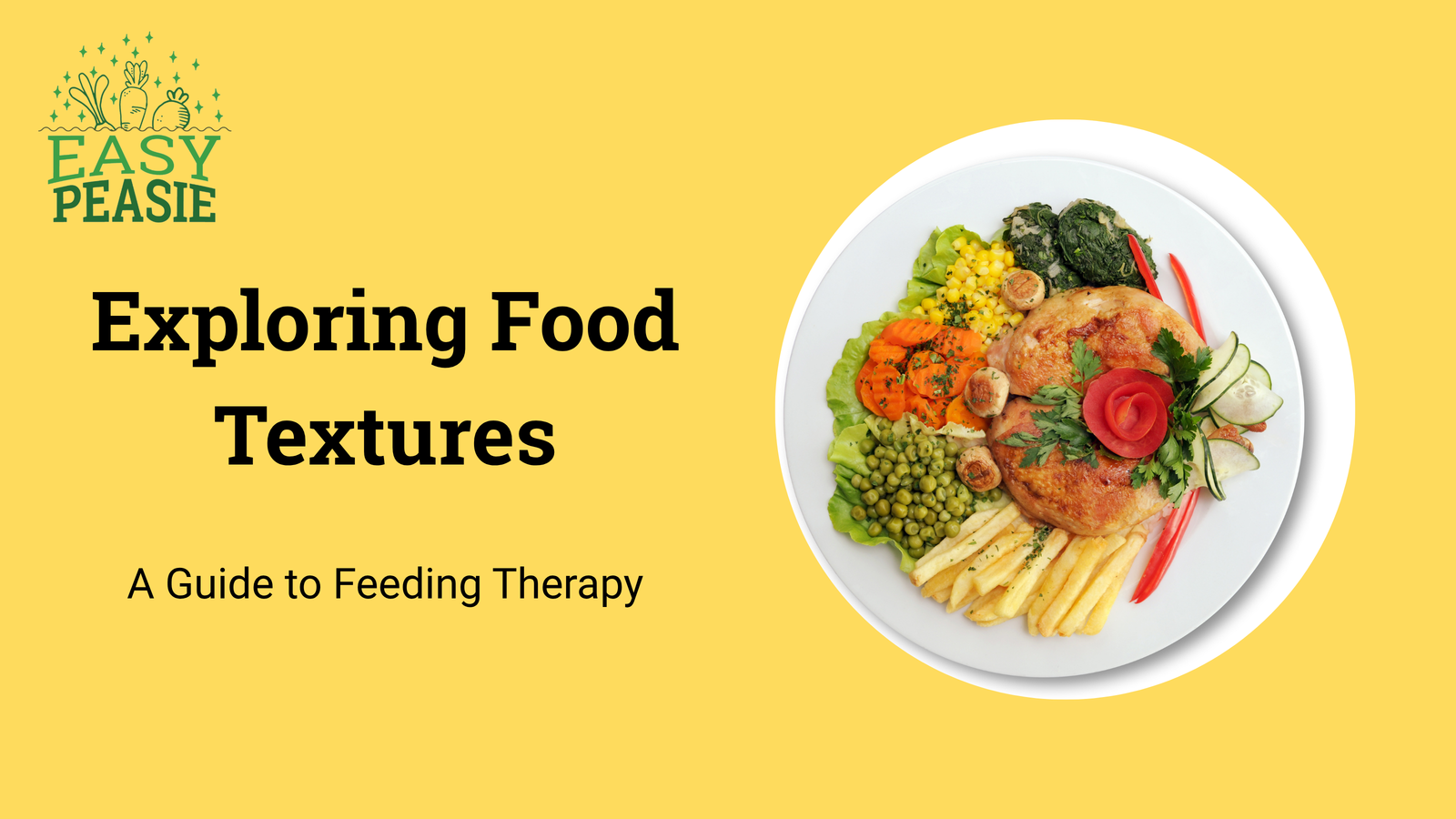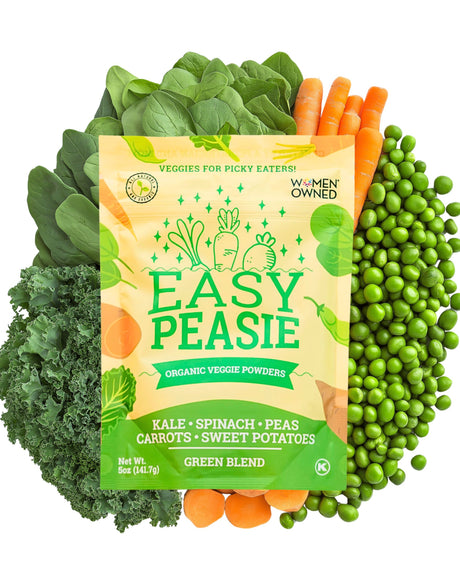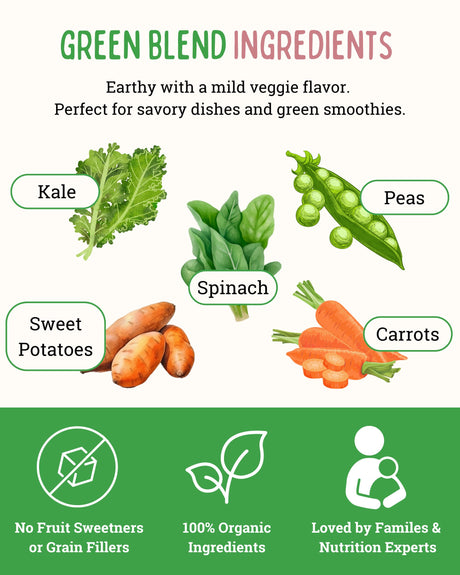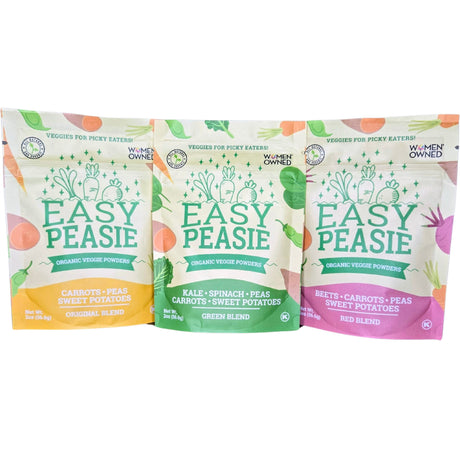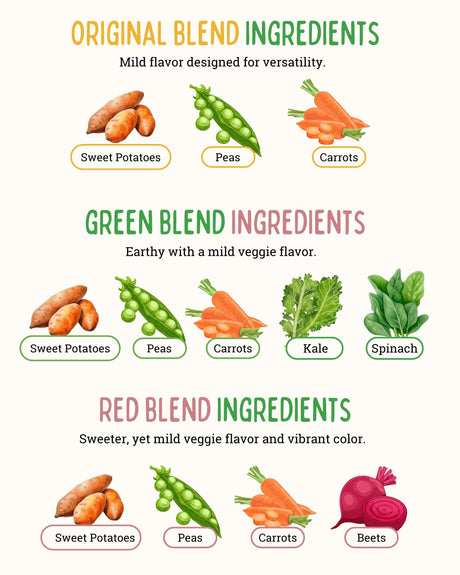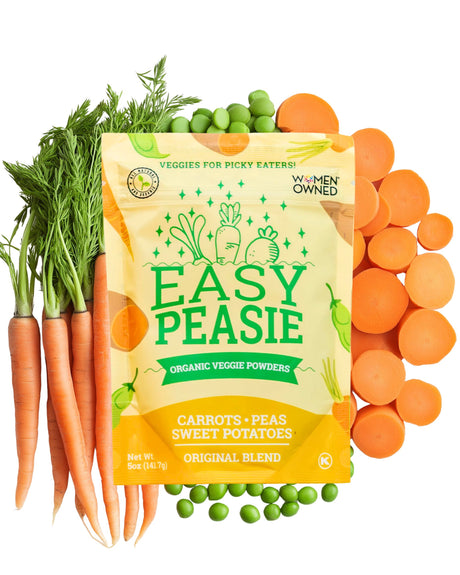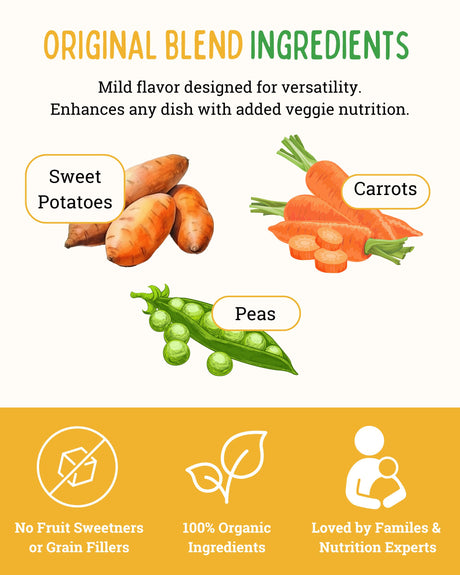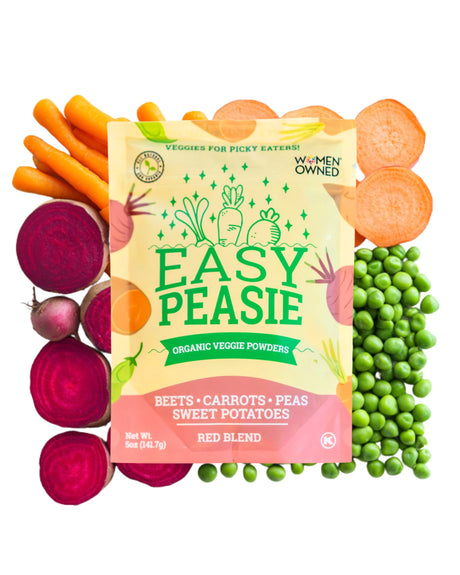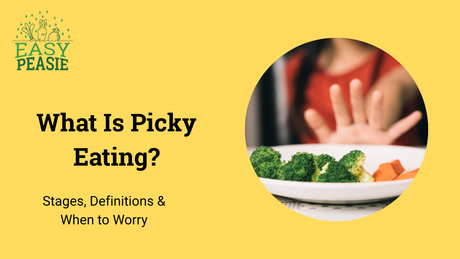The Importance of Food Textures in Feeding Development
When it comes to children’s feeding development, food textures play a significant role.
The way a food feels in the mouth can either encourage adventurous eating or lead to a complete refusal, especially for kids with sensory challenges or texture sensitivities. Some kids may be perfectly happy with purees but shy away from anything with lumps or crunch, while others may struggle with the sliminess of certain foods. These reactions can make mealtime a challenge for parents, but with the right approach, introducing a variety of textures can help children develop healthier eating habits over time.
In this blog, we’ll explore how feeding therapy can be used to help kids explore new food textures and overcome aversions. We’ll dive into practical techniques for introducing textured foods, ways to manage texture aversion, and how to guide your child through food texture exploration in a positive and supportive way. Whether your child is a picky eater or has more specific sensory challenges, this guide will offer helpful tips to support their feeding journey.
Understanding Food Texture Sensitivity in Children
What is Food Texture Sensitivity?
Food texture sensitivity refers to a child’s heightened reaction to the way certain foods feel in their mouth. For some kids, certain textures can feel unpleasant or overwhelming, leading to aversions or even refusal to try new foods. Whether it’s a slimy piece of fruit or a crunchy vegetable, these sensitivities can make mealtimes a challenge.
Sensory Challenges with Food Textures
Many children with food texture sensitivities may also experience broader sensory processing challenges. Foods that feel too mushy, gritty, or sticky can trigger strong reactions, from gagging to complete food rejection. These challenges are especially common in kids who struggle with sensory processing issues, including those on the autism spectrum.
For these kids, texture can play as big a role as taste.
The Role of Feeding Therapy for Texture Issues
Feeding therapy can be a game-changer for children with food texture sensitivities. Feeding therapists use a variety of techniques to help kids become more comfortable with different textures, gradually increasing their tolerance while building positive associations with food.
By working through texture challenges in a structured, supportive environment, children can learn to enjoy a wider range of foods.
Stages of Food Texture Progression in Feeding Therapy
Understanding the Food Texture Hierarchy
Feeding therapists often use a “texture hierarchy” to introduce new foods in a manageable way, starting with the easiest textures and gradually moving toward more complex ones.
Purees and liquids are typically the starting point because they’re smooth and consistent.
As children become more comfortable, they progress to soft solids, mixed textures, and eventually more challenging foods like crunchy vegetables or chewy meats.
Stages of Texture Progression
The texture progression in feeding therapy typically follows a set order, starting with smooth liquids and purees, such as baby food or yogurt, where the texture is uniform and easy to swallow. Next come soft solids like mashed potatoes or scrambled eggs, which require minimal chewing. As a child becomes more comfortable, they move on to mixed textures, like soups with chunky vegetables or oatmeal with fruit pieces.
The final stage involves crunchy or chewy solids, such as crackers, raw vegetables, or tougher meats, which demand more advanced chewing skills. Every child progresses at their own pace, and it’s important to recognize when they’re ready to move up the texture ladder.
If your child handles current textures with ease, explores foods with their hands, or shows interest in more complex foods, it may be time to introduce the next stage. However, patience is key, as some children may need more time before they’re ready to advance.
Tips for Introducing New Textures to Kids
How to Introduce Textured Foods to Toddlers
Introducing textured foods to toddlers can feel like an adventure in patience! Start with textures that are just a step beyond what they’re already comfortable with, like moving from smooth purees to mashed or slightly chunkier foods.
Offer new textures in small amounts alongside familiar favorites, and allow your toddler to explore the food with their hands first—sensory play is an important part of getting used to new textures.
Overcoming Texture Aversion in Children
For kids who actively avoid certain textures, slow and steady exposure is key. Try modeling—eating the textured food yourself to show them it’s safe—and encourage small tastes without pressure. Positive reinforcement, such as praise or a small reward, can help ease their anxiety. It’s important not to force the issue; instead, focus on creating a stress-free environment where your child feels comfortable exploring new sensations at their own pace.
Managing Texture Aversion in Autism
Children with autism may experience heightened sensitivity to textures, making mealtimes especially challenging. Patience and sensory accommodation are crucial. Introduce new textures gradually, starting with foods that have similar textures to what they already tolerate. You can also try incorporating other sensory activities before meals to help desensitize them, such as playing with textured toys or doing oral motor exercises. Understanding their unique sensory needs will help create a more supportive feeding experience.
Feeding Therapy Techniques for Texture Sensitivities
Key Feeding Therapy Exercises for Texture Tolerance
Feeding therapy often includes exercises designed to increase a child’s comfort with different textures. Chewing exercises using easy-to-manage foods, like soft crackers or chewy snacks, can help strengthen oral motor skills. Oral motor activities—such as blowing bubbles or using a straw—are also used to prepare the muscles needed for chewing and swallowing various textures.
Using Desensitization Techniques
Desensitization is a gentle way to introduce kids to challenging textures. Start by offering non-food items with similar textures (e.g., play dough or sponges) during playtime.
Once they’re more comfortable with these sensations, you can introduce similar food textures, gradually increasing the difficulty. This slow, supportive approach helps reduce anxiety and build texture tolerance over time.
Feeding Therapy Techniques for Sensory Issues
For children with sensory processing disorders, feeding therapists use specialized techniques to help them feel more comfortable with food textures.
These might include providing calming sensory input before meals (like weighted blankets or deep pressure) or offering foods in a specific sequence, from smooth to textured.
By respecting their sensory boundaries and providing consistent exposure, therapists help children overcome their aversions in a safe, structured way.
Food Texture Exploration Activities
Food Texture Exploration Activities for Kids
Exploring textures doesn’t always have to happen at the dinner table! Hands-on activities like food play, texture sorting, and sensory bins can make food exploration fun and pressure-free. Let kids squish mashed potatoes, feel the crunch of crackers, or play with rice and pasta in a sensory bin. These playful experiences help familiarize them with textures without the expectation of eating.
Using Sensory Play to Introduce Textures
Sensory play is a valuable tool for reducing food texture anxiety. When kids engage with different textures through touch, they’re more likely to feel comfortable when those same textures appear on their plate. Try incorporating sensory-friendly foods like whipped cream, yogurt, or dried beans into playtime, allowing children to get messy and explore in a no-pressure setting. This builds a bridge from play to mealtime.
Fun Ways to Incorporate Textured Foods
Creativity is key when introducing textured foods! Veggie patties, soft muffins, or textured snacks like crackers and dried fruit can make mealtime more enjoyable.
Use cookie cutters to shape foods into fun designs, or create food art with textured ingredients, like mashed avocado spread on toast with fruit slices for eyes. When food looks fun, kids are more likely to give it a try.
Best Foods to Introduce in Feeding Therapy
Best Foods for Texture Exploration
Start with foods that are gentle on sensitive palates. Begin with smooth textures like mashed fruits (banana, avocado), purees, and soft scrambled eggs. Once your child becomes comfortable with these, progress to slightly more textured foods, such as soft pasta, rice, or finely chopped vegetables. Gradual progression is key to avoiding overwhelm.
Foods to Avoid Initially
Certain foods may be too challenging for kids who are just beginning to explore textures. Crunchy vegetables like raw carrots, hard meats, or foods with mixed textures (like soups with chunky vegetables) can trigger aversions. These should be introduced later, once your child feels more comfortable with a broader range of textures.
Introducing a Variety of Textures in a Single Meal
Offering a variety of textures at mealtime helps kids become more comfortable with different sensations. Start with two to three textures on the plate, such as smooth mashed sweet potatoes, soft chicken, and a small portion of rice. By gently exposing your child to multiple textures in a single meal, you help build tolerance and flexibility over time.
Addressing Food Texture Anxiety
What is Food Texture Anxiety?
Food texture anxiety occurs when a child feels overwhelmed or fearful of certain food textures. This anxiety can lead to strong food aversions, making mealtimes stressful for both children and parents. Kids may refuse to try new foods, gag on unfamiliar textures, or feel anxious around specific sensations.
Helping Kids Cope with Texture Anxiety
Managing texture anxiety starts with gradual exposure. Slowly introduce new textures, starting with small bites of familiar foods that are slightly more textured than what your child is used to. Create a calm, pressure-free eating environment where kids feel safe to explore without being forced to eat. Patience and gentle encouragement go a long way in helping them cope with their anxiety.
Supporting Emotional Resilience in Texture Therapy
Building emotional resilience during texture exploration involves celebrating small victories and creating positive food experiences. Encourage your child to interact with food through touch and smell before tasting. Reinforce their efforts with praise and consistency—whether it’s touching a new food or simply having it on their plate without resistance. This emotional support helps build confidence over time.
Working with a Feeding Therapist
When to Consider Professional Feeding Therapy
If your child’s aversion to textures is severe or progress feels stagnant, it may be time to seek professional feeding therapy. Signs that indicate feeding therapy might be helpful include strong reactions to certain textures, refusal to eat whole food groups, or mealtime battles that cause stress for the entire family.
Collaborating with Your Feeding Therapist
Working with a feeding therapist is a team effort. Stay in close communication with the therapist to understand the goals and strategies being used. Reinforce these techniques at home by continuing the exercises introduced in therapy sessions, and share feedback with the therapist to track progress and adjust the plan as needed.
Feeding Therapy at Home
Feeding therapy doesn’t stop after the session ends! Continue the work at home by practicing the exercises and texture exploration techniques introduced by your therapist.
Encourage your child to play with new textures, offer gradual challenges, and incorporate sensory-friendly foods into everyday meals. With consistency, home practice can speed up progress and help your child become more comfortable with new foods.
Summary
Understanding and addressing food texture challenges is key to helping children feel more confident and comfortable with new foods. Whether through gradual exposure, feeding therapy, or creative play, there are effective strategies to support kids in their texture journey.
Be patient and consistent—it takes time for children to overcome food texture anxieties, but with the right approach, progress is possible. Don’t hesitate to seek support from feeding therapists if needed, and remember to celebrate every small step forward.
We’d love to hear your experiences with food texture challenges! Share your story in the comments, follow Easy Peasie on social media (Facebook, Instagram, and YouTube), and explore additional resources on texture progression and feeding therapy to help your child succeed at mealtimes.

